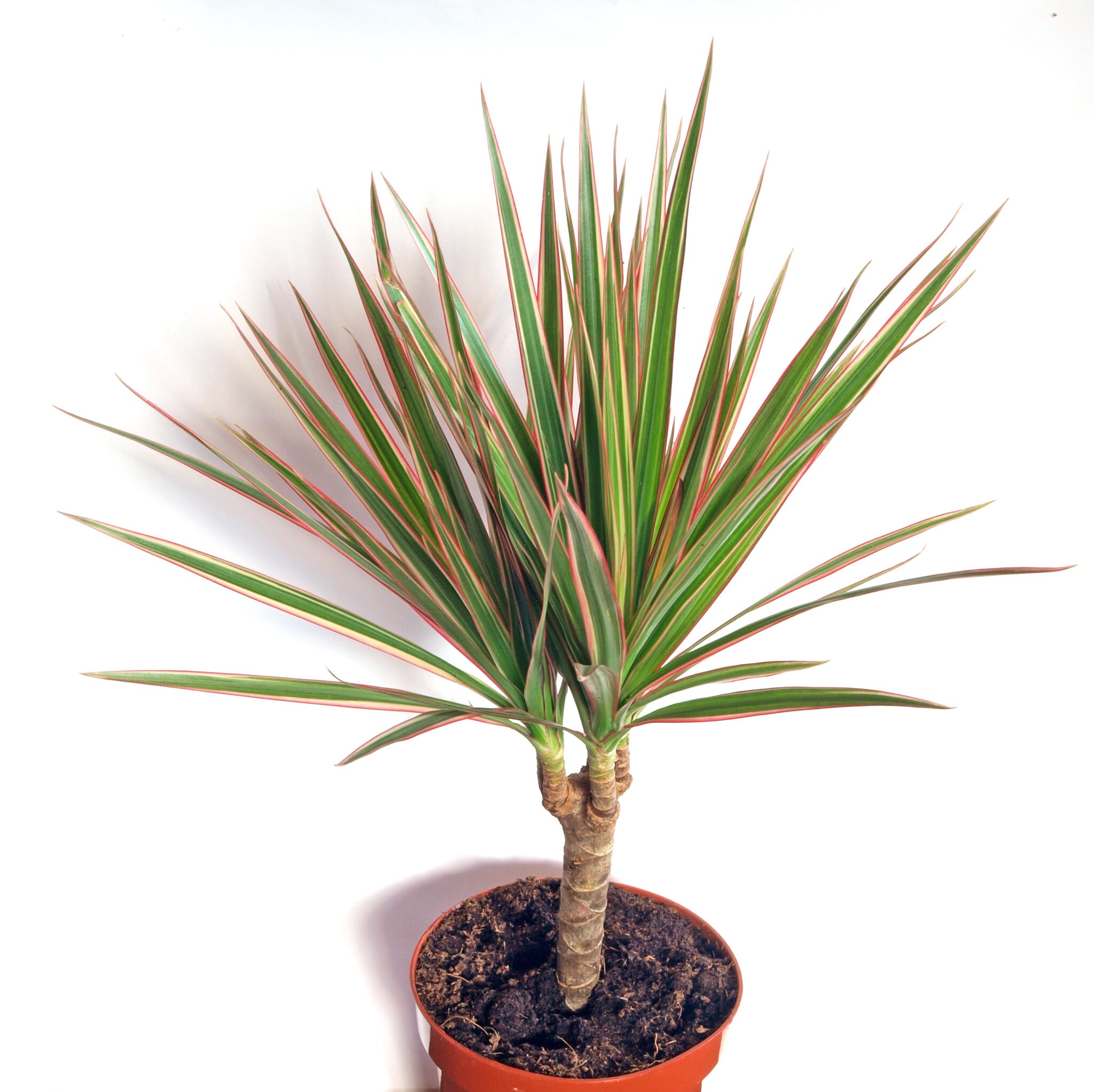Introduction
Dracaena (Dracaena marginata) commonly known as Tricolour or Rainbow plant is a popular house plant because of its tolerance to low light. The plants look very attractive with a dense terminal rosette of leaves. The leaves are stripped cream white between green and rose red margins therefore known as Tricolour. This plant belongs to the family Asparagaceae which includes around 40 other species.
Common names
Dragontree
Botanical Name
Dracaena marginata
Height and Spread
15-20 feet and 3-10 feet
Leave appearance
Colorful (Strips have a different color)
Sun requirement
Partial shade and partial sun
Water requirement
Medium during the summer season and less during winter
Type of soil
Well-drained soil mixed with peat or humus-rich
Mode of propagation
Stem cutting
Toxicity
Cats
Dracaena marginata general description and propagation
The plant grows well in shade and also in sun. Can withstand drought conditions and is a low maintenance plant. Propagation of this plant is mainly through stem cutting.
Dracaena marginata as an indoor air purifying plant
The is used as an indoor plant not only because of its good appearance but is also cleans indoor air pollutants thus acts as an air-purifying plant. As per the reports were given by NASA following the plant, Dracaena marginata helps in the removal of the following pollutants (1).
Benzene
According to WHO major sources of benzene are automobiles from the attached garage, heating and cooling systems, solvents. Exposure to benzene causes nausea, headache and vomiting, has low but non-negligible carcinogenic risk. Sources of benzene are tools and attached garages, gas and charcoal cooking, solvents, etc (2) (3). Dracaena marginata help in the absorption of benzene in indoor conditions.
Formaldehyde
Formaldehyde is one of the major indoor pollutants. The main source of formaldehyde indoor is facial tissue papers, paints, synthetic fibers, wooden flooring, wooden furniture, waxed paper, shoe polish other makeup items (4). Planting Dracaena marginata helps in absorbing formaldehyde thus reduces the level of pollutants from the interior environment.
Xylene
Along with formaldehyde, paints, tobacco smoke, rubbers, vehicle exhaust also emits xylene (4). This xylene gets accumulates in the houses and offices due to poor ventilation in the buildings. Therefore planting Dracaena marginata helps in reducing the xylene pollution.
Toluene
Toluene is another harmful air pollutant that causes central nervous system dysfunction, necrosis, Irritation of the upper respiratory tract and eyes.
Children exposed to these harmful pollutants also suffer developmental problems and reproductive problems in females. The major source of toluene pollution is gasoline, solvents in paints, plastic and soda bottles, paint cosmetics, and other organic chemicals (5). Dracaena plants indoor thus results in removing toluene from the air and thus give clean and fresh air to respire.
Trichloroethylene
The main use of this substance is done in the degreasing process in the industries. Household products like correction ink and paints also contain trichloroethylene. The main health hazard of trichloroethylene is it affects the central nervous system and causes cancer (6). Therefore planting Dracaena helps in the removal of this harmful volatile component from the indoor environment.
Read more about air purifying plants
- 14 Best indoor air purifying plants
- Snake Plant (Sansevieria) indoor air purifying indoor plant
- Areca Palm (Chrysalidocarpus lutescens) indoor air purifying plant
- Bamboo Palm ( Chamaedorea seifrizii ) indoor air purifying plant
- Syngonium (Arrowhead) indoor air purifying plant

… [Trackback]
[…] Informations on that Topic: foodthesis.com/dracaena-marginata-indoor-air-purifying-plant/ […]
[…] Asha Jyoti, Dracaena marginata: Indoor air purifying plant, Food Thesis: https://foodthesis.com/dracaena-marginata-indoor-air-purifying-plant/ 2. Balcony Garden Web, 6 Great Dracaena Plant Benefits (Proven In Studies): […]